The Bristol bashers are back with an arsenal of new noisemakers on this updated Rundown.
Between 2016 and 2024, Bristol outfit IDLES have gone from being snarling, post-punk underdogs to being snarling, post-punk champions. Their debut LP, Brutalism, was an immediate hit, and since then they’ve turned out a string of full-length records that have expanded their creative vocabulary while increasing their popularity. It’s all come to a head this year with Tangk, their Grammy-nominated fifth album, which dropped in February.
Along the way, IDLES’ sound has mutated into experimental offshoots and outgrowths, so it’s little surprise that the rigs of guitarists Mark Bowen and Lee Kiernan, along with bassist Adam Devonshire, have done the same. While they still tour with some of the gear they showed off on our 2021 Rig Rundown, each player has fun new trinkets that contribute to their run of shows this year. But even with all the new toys, they keep an element of danger in the mix, and certain variables mean the set sounds different every night: “People come to see an IDLES show ’cause it almost falls apart all the time,” grins Bowen.
Brought to you by D’Addario.Bowen's Bari
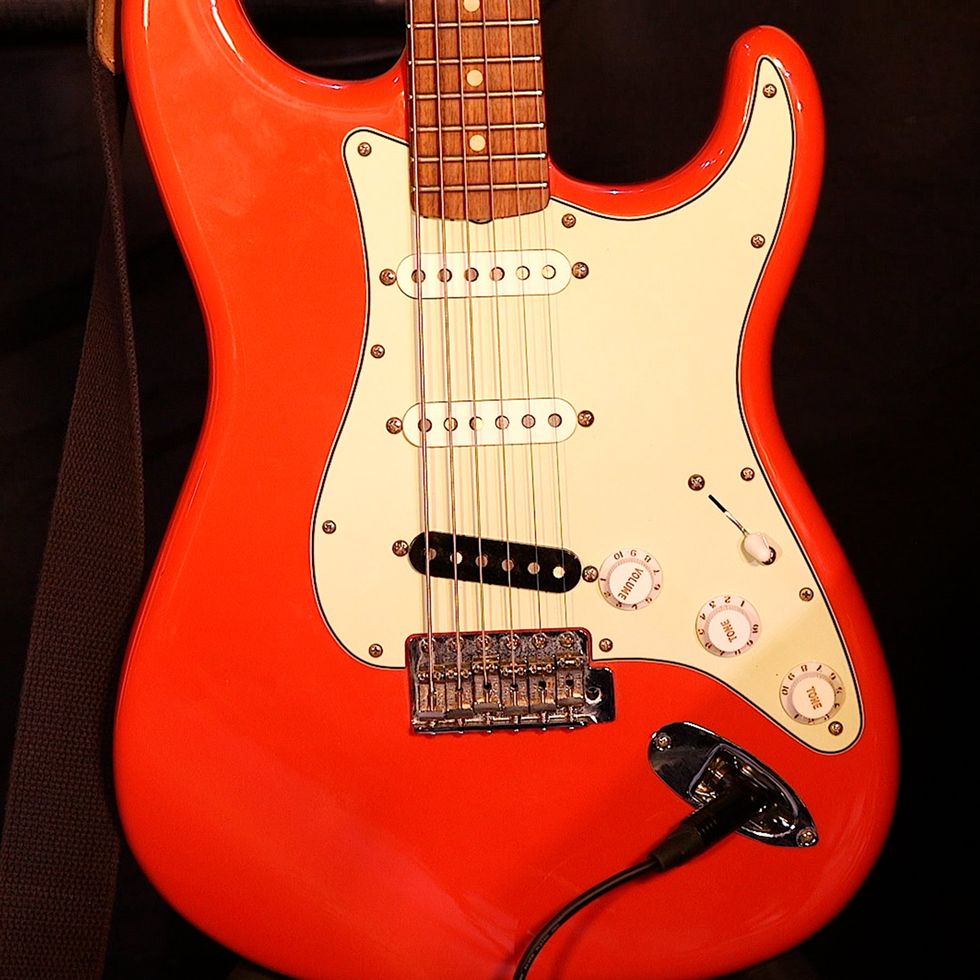
Bowen had a baritone neck matched with this Dacota red Fender Stratocaster body. It’s got stock pickups, which split the difference between the twang of a Strat and the bassy tones of the bari. This one is tuned to either B standard or drop A#.
Triples Make It Safe
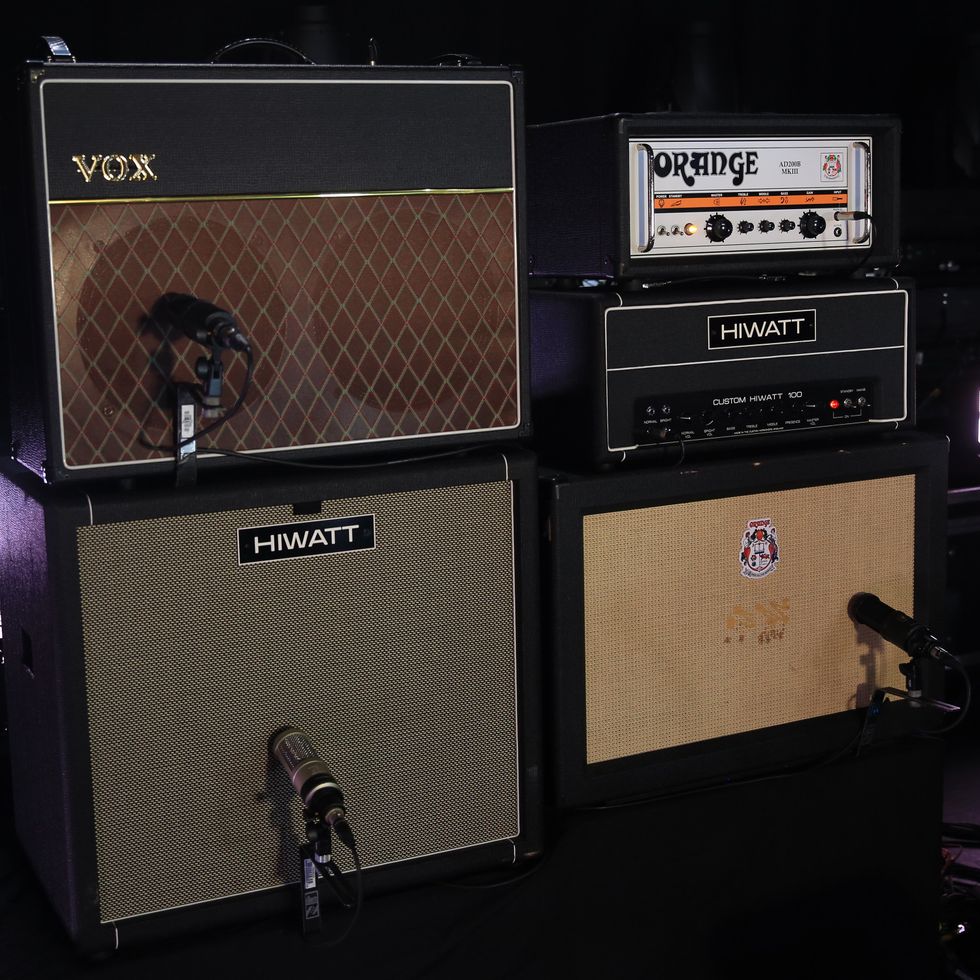
Bowen’s signal is blasted out via a trio of amplifiers: a Vox AC30, Orange AD200B MKIII, and a Hiwatt Custom 100. A Hiwatt and Orange cabinet duo lend different textures to the soundwaves.
Mark's Mothership

Bowen’s board setup is largely the same as he had in the 2021 Rig Rundown, but there are a few tweaks.
His primary guitar pedalboard remains mostly the same, with Death By Audio Reverberation Machine and Echo Dream 2, Adventure Audio Dream Reaper, Moog MF Delay and MF Ring, Death By Audio Waveformer Destroyer, Electro-Harmonix POG2, 4ms Pedals Mini Swash Full, Red Panda Particle and Raster, and a JHS Haunting Mids. His new tuner, though, is a Walrus Audio Canvas. It all still runs through a GigRig 3 switcher. Under the hood resides three signal sweeteners including an EQD Acapulco Gold and a pair of ZVEX boxes—a Lo-Fi Junky & Super Duper 2-in-1.
Next comes his modulation station, equipped with Moog’s Moogerfooger MF-107 FreqBox, MF-102 Ring Modulator, MF-108M Cluster Flux, and CP-251 Control Processor, in addition to another no-name glitch/synth device. The Electro-Harmonix 95000, Old Blood Noise Endeavors Minim, and EHX POG2 are still in the mix, but the Strymon TimeLine has been swapped for a Vongon Paragraphs. An Akai MPC One+ helps with sampling, and a Sequential Prophet-5 synth ties it all together. A pair of Strymon Iridiums are hidden under the Moog units, which handle all the signals from this electric jungle—as well as signal from Jon Beavis’ drums! “It’s the tension between the space-age mad stuff and the AC/DC guitar,” says Bowen. “I want both”
A third board, beneath the modular materials, is loaded up to with three Mission Engineering EP-1 expression pedals, a Walrus Canvas Re-Amp, a Moose Electronics Dobsky Fuzz, a GigRig Three2One, and another GigRig G3.
Tape Measures
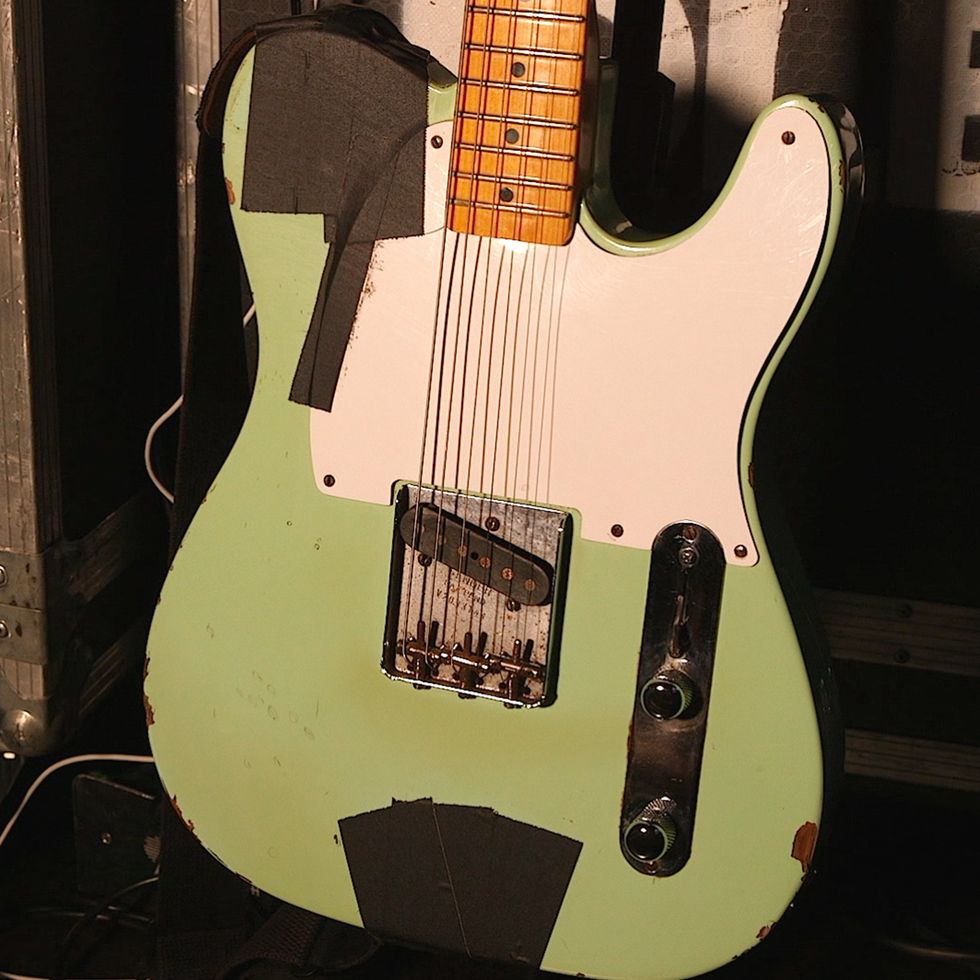
Lee Kiernan’s Fender 70th Anniversary Esquire has become his go-to, a very versatile guitar which he’s left unmodified—save for the gaffer tape, of course. Despite the presence of strap locks under the tape, Kiernan’s learned you can’t be too careful.
Jackson Shredder
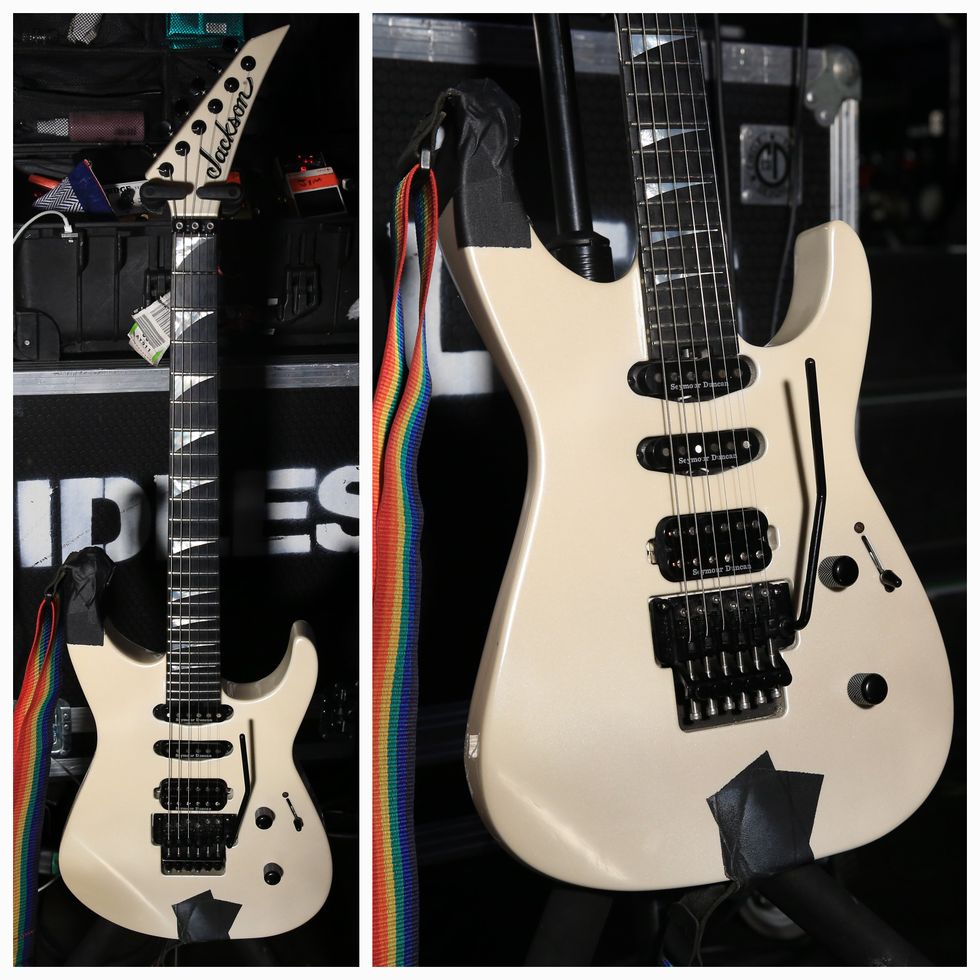
Kiernan calls this Jackson Soloist “one of the best-playing guitars he’s ever felt.” Enough said.
Triples is Best
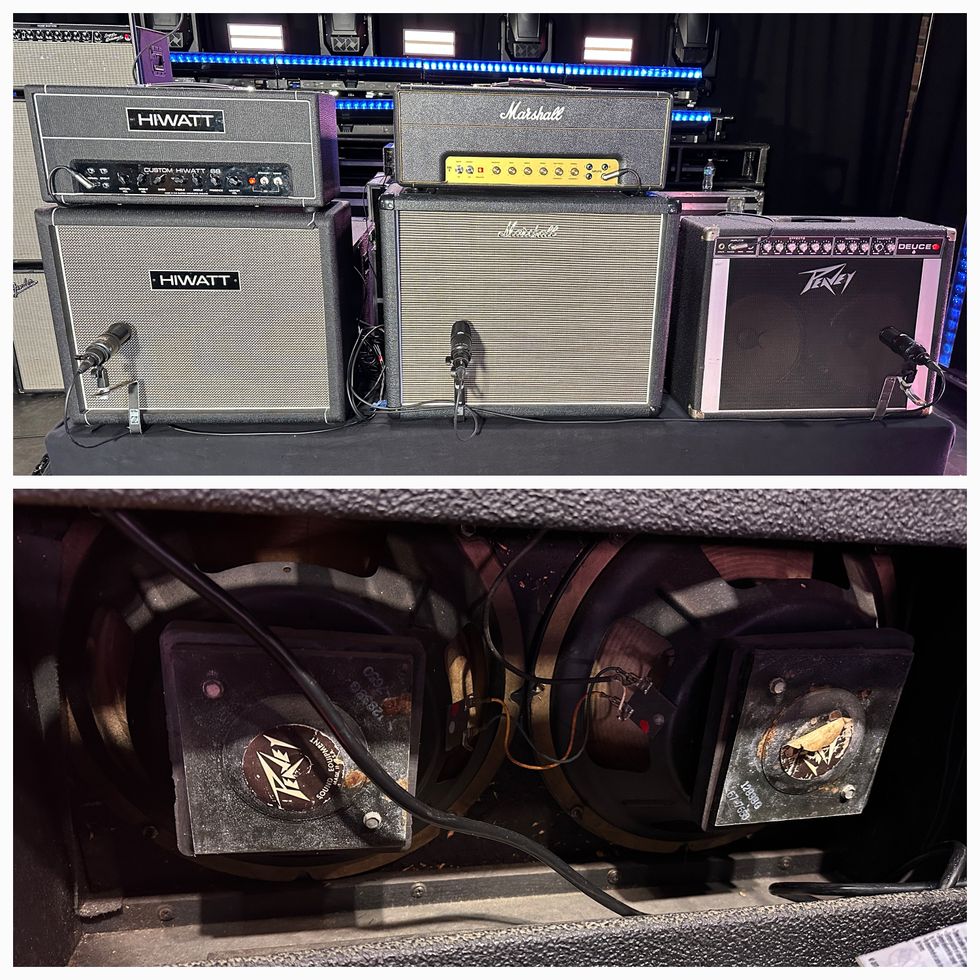
This time around, like Bowen, Kiernan is running a trio of amps: a Hiwatt DR88, Marshall 1987x, and Peavey Deuce, which still has the original, square-magnet Peavey speakers. (A backup 2x12, loaded with Eminence Swamp Thangs, is on-hand in case things go wonky.) At this point, shouldn’t he just get a Kemper? “Nope,” he responds shortly.
Have You Met Gary?
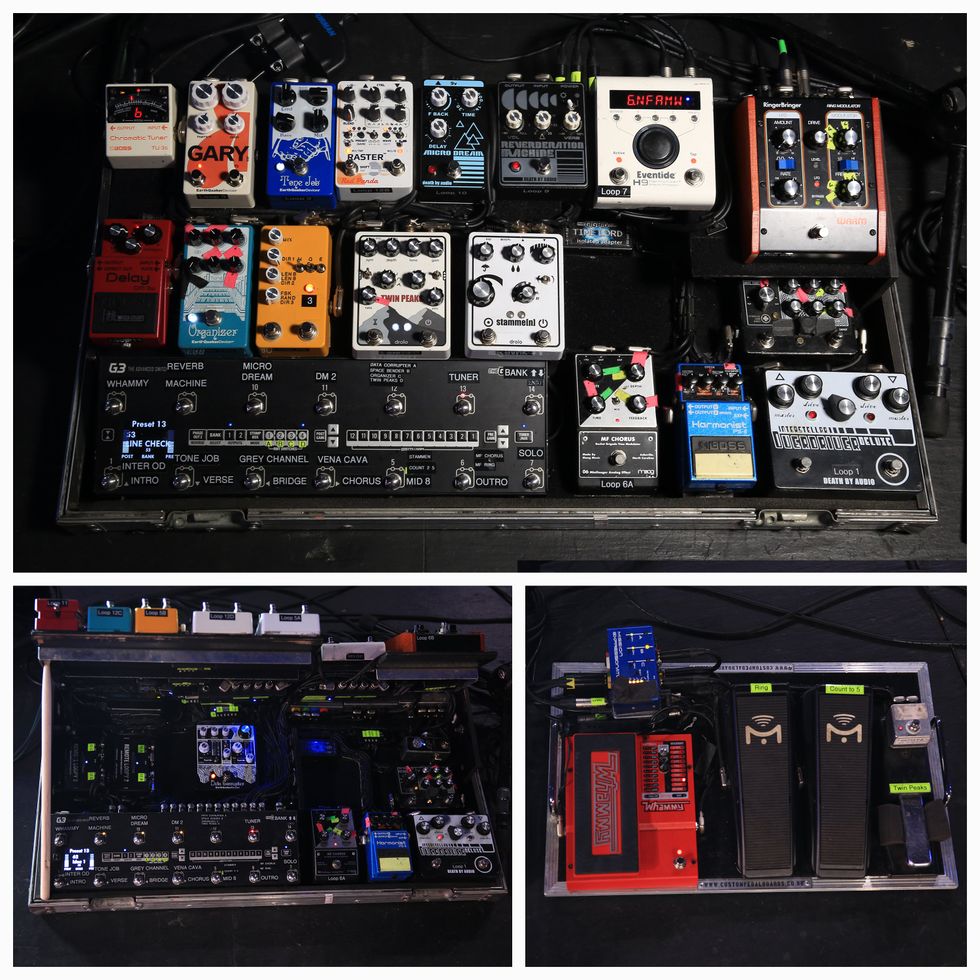
Kiernan’s board has many of the same stomps as last time, but it’s been configured into a double-decker layout rather than a sprawling, side-by-side affair, and the newest addition is the EarthQuaker Devices Gary, a distortion/fuzz combo he made with the Ohio effects company from the green side of their now-discontinued Gray Channel. Aside from his new buddy Gary, Kiernan runs a Boss TU-3S, EQD Tone Job, Red Panda Raster, Death By Audio Micro Dream and Reverberation Machine, Eventide H9 Harmonizer, Warm Audio Ringer Bringer, Boss DM-2w, EQD Organizer, Montreal Assembly Count to Five, Drolo Twin Peaks and Stamme[n], Death By Audio Interstellar Overdriver Deluxe, Boss PS-5, Moog MF Chorus, Xotic EP Booster, Intensive Care Audio Vena Cava Filter, EQD Data Corrupter, and GigRig Remote Loopy 2. A smaller separate board is home to a DigiTech Whammy, two Mission Engineering expression pedals, a third expression pedal for the Drolo Twin Peaks, and a Mission Engineering Expressionator.
Out of sight, Kiernan also has a EQD Acapulco Gold, and ZVEX Effects Instant Lo-Fi Junky and Super Duper 2-in-1.
(American) Ultra Mono

This Fender American Ultra Jazz bass was made specially for Adam Devonshire. He was stoked about this unique colorway, but wanted it paired with a thin C-profile neck. Fender made it happen, bolting it onto the body. Devonshire strings it with Rotosounds.
Lollapalooza Lincoln
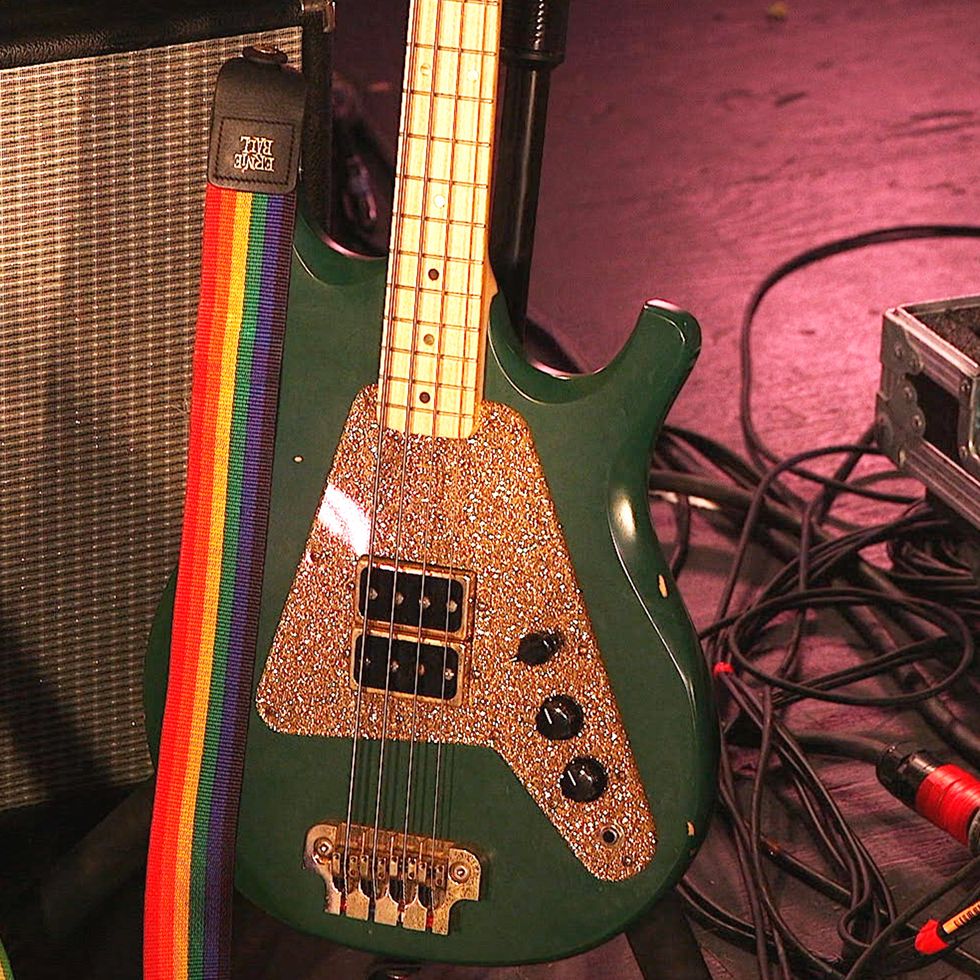
When IDLES was in Chicago to play Lollapalooza, bass builders Serek invited him to check out their shop. After a few minutes with this Lincoln bass, Devonshire had put in an order.
Fane Versus Fullerton

Taking a 33-percent-less approach than his bandmates on 6-string guitar, Devonshire runs just two amps: a Hiwatt DR201 and a Fender Super Bassman.
Sweaty Stomps
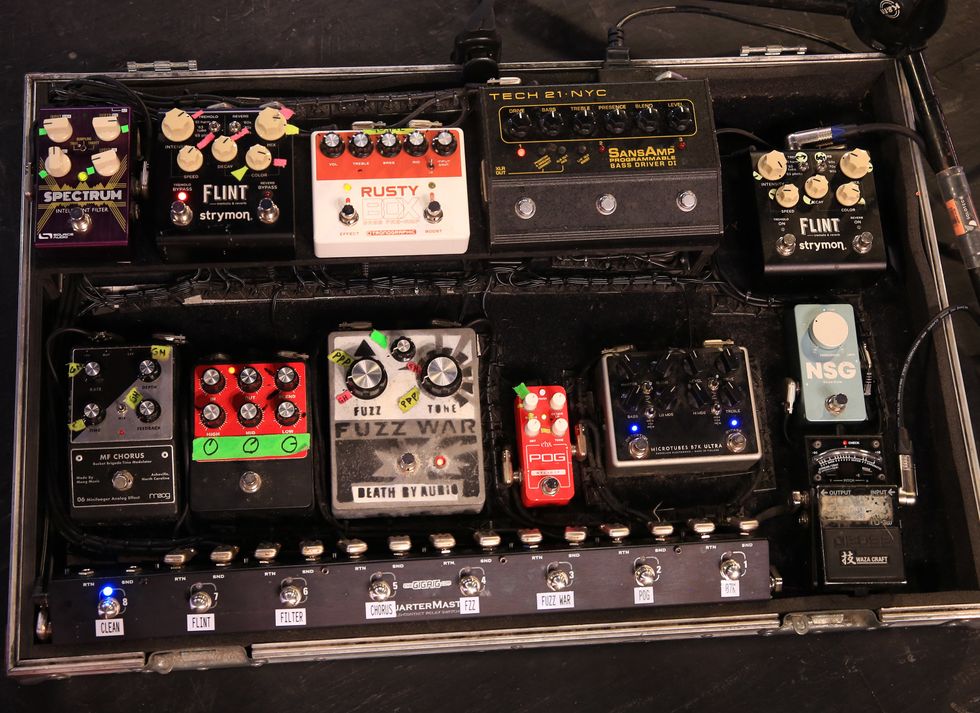
Devonshire has a problem: He sweats a lot. That’s not a big problem if your job doesn’t involve standing over rare, expensive electronics while dripping liquid onto them. So, he’s got a big fear that he’ll flood his favorite effects.
That said, these are the ones he feels are worth the risk: a Boss TU-3W, GigRig QuarterMaster, Darkglass Electronics NSG and Microtubes B7K Ultra, EHX Pico POG, Death By Audio Fuzz War, Baltimore Sonic Research Institute FZZ, Moog MF Chorus, Source Audio Spectrum, two Strymon Flints, Tronographic Rusty Box, and Tech 21 SansAmp Programmable Bass Driver DI.
Shop Idles' Rig

Electro-Harmonix POG2 Polyphonic Octave Generator Pedal
Moog Moogerfooger MF-104M Analog Delay
Moog Moogerfooger MF-108M Cluster Flux
Electro-Harmonix 95000 Performance Loop Laboratory 6-Track Looper
Mission Engineering Expressionator
EarthQuaker Devices Acapulco Gold
Darkglass Microtubes B7K Ultra
Tech 21 SansAmp Programmable Bass Driver DI
Fender American Ultra Jazz Bass
EarthQuaker Devices Gary Automatic Pulse Width Modulation Fuzz/Overdrive Pedal
EarthQuaker Devices Tone Job V2 EQ and Boost Pedal
EarthQuaker Devices Organizer V2 Polyphonic Organ Emulator Pedal
EarthQuaker Devices Data Corrupter Harmonizing PLL Pedal
![Idles Rig Rundown [2024]](https://www.premierguitar.com/media-library/youtube.jpg?id=54836554&width=1200&height=675)



![Devon Eisenbarger [Katy Perry] Rig Rundown](https://www.premierguitar.com/media-library/youtube.jpg?id=61774583&width=1245&height=700&quality=70&coordinates=0%2C0%2C0%2C0)























































